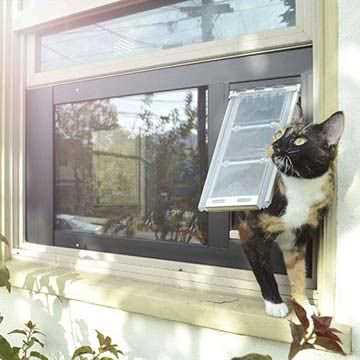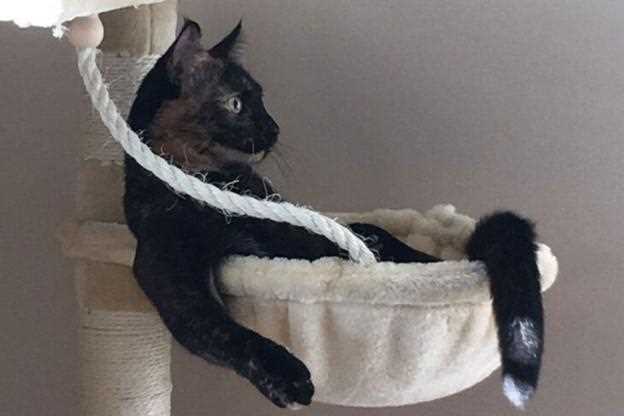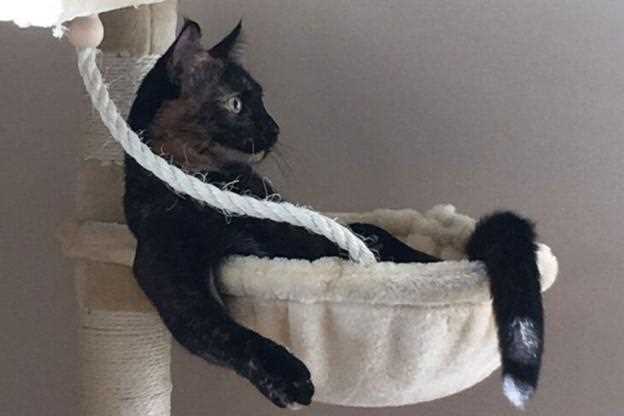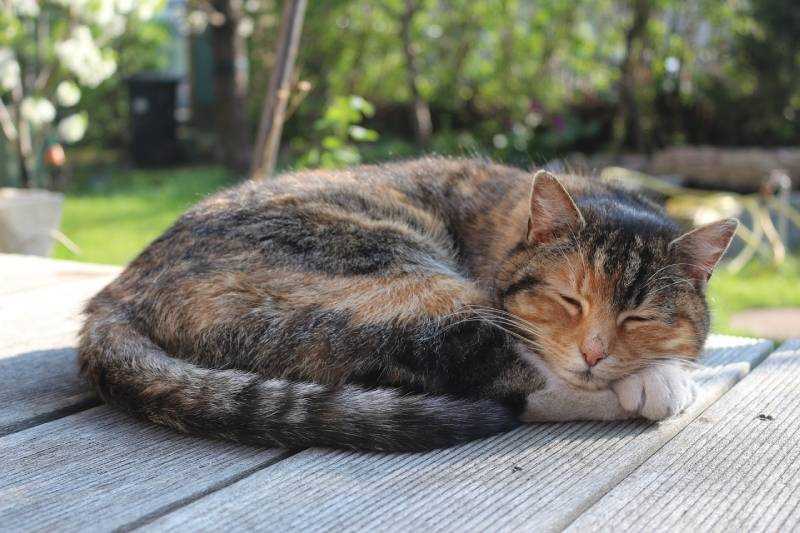Installing sturdy screens on windows and doors is a straightforward approach. This ensures that fresh air enters without providing an escape route. Choose durable materials that withstand even the most curious paws.
Creating an engaging indoor environment can significantly reduce the allure of the outside world. Set up climbing structures, interactive toys, and cozy napping spots to stimulate curiosity and playfulness.
Establishing a routine is beneficial. Regular playtimes and feeding schedules create a sense of security and predictability, making the indoor lifestyle more appealing. Interactive play sessions with feather wands or laser pointers engage instincts and provide mental stimulation.
Utilizing pheromone diffusers and calming sprays can help ease anxiety, making the indoor atmosphere more inviting. These products mimic natural feline pheromones, promoting relaxation and comfort.
Finally, rewarding good behavior reinforces the idea that staying indoors is a positive experience. Treats or extra affection for choosing to remain inside can effectively shape preferences over time.
Understanding Behavior and Instincts
To effectively manage my desire to venture outdoors, it’s important to grasp the roots of my instincts. As a feline, I possess inherent traits that drive my curiosity and exploration.
- Territorial Nature: I feel the urge to mark my territory. Providing a defined space inside helps satisfy this instinct.
- Hunting Drive: The instinct to hunt is strong. Engaging in interactive play mimics this behavior, allowing me to express my predatory skills.
- Curiosity: My inquisitive nature leads me to investigate new surroundings. Creating stimulating environments indoors with toys and climbing structures can curb this urge.
Understanding these aspects allows guardians to create an enriching indoor experience. Incorporating elements that cater to my instincts will help maintain my contentment without the need to escape.
- Provide vertical spaces like cat trees to satisfy climbing instincts.
- Use puzzle feeders to engage my mind and mimic scavenging behavior.
- Regular playtime helps channel my energy and hunting instincts.
By recognizing my natural behaviors and addressing them creatively, the desire to roam outside diminishes, leading to a happier, well-adjusted life indoors.
Creating a Stimulating Indoor Environment
Provide engaging toys that mimic hunting behavior. Feather wands, laser pointers, and interactive puzzles can keep me busy and mentally sharp. Rotate toys regularly to maintain interest; what’s old can feel new again!
Vertical Space

Install shelves or cat trees for climbing and perching. Elevation allows exploration of territory, satisfying natural instincts. Create safe pathways between perches to encourage movement and play.
Multi-Sensory Experiences

Incorporate scratching posts with different textures and scents. Catnip-infused items can entice, while natural materials like sisal and wood provide variety. Use pheromone diffusers to create a calming atmosphere. For more information about health and wellbeing, check out this link on how long to quarantine cat with uri.
Utilizing Physical Barriers and Safety Measures

Install sturdy screens on windows and use secure locks to prevent escape routes. Opt for screens that can withstand a curious paw or two. Check for gaps or weak spots regularly, as even the smallest openings can be enticing for explorers.
Creating an Enclosed Outdoor Space
A catio or enclosed outdoor area provides a safe way to enjoy the fresh air without the risks of wandering. Construct a space with sturdy materials, incorporating shelves and perches for climbing and lounging. Consider adding plants that are non-toxic and safe for felines.
Utilizing Indoor Safety Measures
Ensure doors and windows are monitored when opened. Use baby gates or pet barriers to restrict access to certain areas. Train humans in the home to be vigilant about keeping doors closed, especially during high-traffic times. Consider using alarms or bells on doors to alert when they are opened.
Training Techniques to Discourage Outdoor Exploration

Positive reinforcement works wonders! Reward desired behaviors with treats or affection. When I show interest in indoor play, my human gives me a tasty snack. This encourages me to stay engaged inside.
Redirect attention using interactive toys. When I gaze longingly at the door, my human grabs a feather wand or a laser pointer. This diverts my focus and satisfies my hunting instincts without stepping into the wild.
Establish a routine. Consistent playtime and feeding schedules make me feel secure and less inclined to wander outside. Knowing when to expect my meals and fun helps curb my curiosity.
Gradually introduce new experiences. My human often rotates toys and adds new climbing structures. This keeps my environment fresh and intriguing, reducing my desire to explore beyond the door.
Socialization is key. Meeting other friendly pets indoors helps me feel connected without needing outdoor adventures. Playdates with fellow felines can be entertaining and fulfilling.
Lastly, if I do spray, my human needs to address it promptly. Learning about what does cat spray look like on walls helps prevent lingering odors, ensuring I remain comfortable and happy indoors.
Installing sturdy screens on windows and doors is a straightforward approach. This ensures that fresh air enters without providing an escape route. Choose durable materials that withstand even the most curious paws.
Creating an engaging indoor environment can significantly reduce the allure of the outside world. Set up climbing structures, interactive toys, and cozy napping spots to stimulate curiosity and playfulness.
Establishing a routine is beneficial. Regular playtimes and feeding schedules create a sense of security and predictability, making the indoor lifestyle more appealing. Interactive play sessions with feather wands or laser pointers engage instincts and provide mental stimulation.
Utilizing pheromone diffusers and calming sprays can help ease anxiety, making the indoor atmosphere more inviting. These products mimic natural feline pheromones, promoting relaxation and comfort.
Finally, rewarding good behavior reinforces the idea that staying indoors is a positive experience. Treats or extra affection for choosing to remain inside can effectively shape preferences over time.
Understanding Behavior and Instincts
To effectively manage my desire to venture outdoors, it’s important to grasp the roots of my instincts. As a feline, I possess inherent traits that drive my curiosity and exploration.
- Territorial Nature: I feel the urge to mark my territory. Providing a defined space inside helps satisfy this instinct.
- Hunting Drive: The instinct to hunt is strong. Engaging in interactive play mimics this behavior, allowing me to express my predatory skills.
- Curiosity: My inquisitive nature leads me to investigate new surroundings. Creating stimulating environments indoors with toys and climbing structures can curb this urge.
Understanding these aspects allows guardians to create an enriching indoor experience. Incorporating elements that cater to my instincts will help maintain my contentment without the need to escape.
- Provide vertical spaces like cat trees to satisfy climbing instincts.
- Use puzzle feeders to engage my mind and mimic scavenging behavior.
- Regular playtime helps channel my energy and hunting instincts.
By recognizing my natural behaviors and addressing them creatively, the desire to roam outside diminishes, leading to a happier, well-adjusted life indoors.
Creating a Stimulating Indoor Environment
Provide engaging toys that mimic hunting behavior. Feather wands, laser pointers, and interactive puzzles can keep me busy and mentally sharp. Rotate toys regularly to maintain interest; what’s old can feel new again!
Vertical Space

Install shelves or cat trees for climbing and perching. Elevation allows exploration of territory, satisfying natural instincts. Create safe pathways between perches to encourage movement and play.
Multi-Sensory Experiences

Incorporate scratching posts with different textures and scents. Catnip-infused items can entice, while natural materials like sisal and wood provide variety. Use pheromone diffusers to create a calming atmosphere. For more information about health and wellbeing, check out this link on how long to quarantine cat with uri.
Utilizing Physical Barriers and Safety Measures

Install sturdy screens on windows and use secure locks to prevent escape routes. Opt for screens that can withstand a curious paw or two. Check for gaps or weak spots regularly, as even the smallest openings can be enticing for explorers.
Creating an Enclosed Outdoor Space
A catio or enclosed outdoor area provides a safe way to enjoy the fresh air without the risks of wandering. Construct a space with sturdy materials, incorporating shelves and perches for climbing and lounging. Consider adding plants that are non-toxic and safe for felines.
Utilizing Indoor Safety Measures
Ensure doors and windows are monitored when opened. Use baby gates or pet barriers to restrict access to certain areas. Train humans in the home to be vigilant about keeping doors closed, especially during high-traffic times. Consider using alarms or bells on doors to alert when they are opened.
Training Techniques to Discourage Outdoor Exploration

Positive reinforcement works wonders! Reward desired behaviors with treats or affection. When I show interest in indoor play, my human gives me a tasty snack. This encourages me to stay engaged inside.
Redirect attention using interactive toys. When I gaze longingly at the door, my human grabs a feather wand or a laser pointer. This diverts my focus and satisfies my hunting instincts without stepping into the wild.
Establish a routine. Consistent playtime and feeding schedules make me feel secure and less inclined to wander outside. Knowing when to expect my meals and fun helps curb my curiosity.
Gradually introduce new experiences. My human often rotates toys and adds new climbing structures. This keeps my environment fresh and intriguing, reducing my desire to explore beyond the door.
Socialization is key. Meeting other friendly pets indoors helps me feel connected without needing outdoor adventures. Playdates with fellow felines can be entertaining and fulfilling.
Lastly, if I do spray, my human needs to address it promptly. Learning about what does cat spray look like on walls helps prevent lingering odors, ensuring I remain comfortable and happy indoors.
Installing sturdy screens on windows and doors is a straightforward approach. This ensures that fresh air enters without providing an escape route. Choose durable materials that withstand even the most curious paws.
Creating an engaging indoor environment can significantly reduce the allure of the outside world. Set up climbing structures, interactive toys, and cozy napping spots to stimulate curiosity and playfulness.
Establishing a routine is beneficial. Regular playtimes and feeding schedules create a sense of security and predictability, making the indoor lifestyle more appealing. Interactive play sessions with feather wands or laser pointers engage instincts and provide mental stimulation.
Utilizing pheromone diffusers and calming sprays can help ease anxiety, making the indoor atmosphere more inviting. These products mimic natural feline pheromones, promoting relaxation and comfort.
Finally, rewarding good behavior reinforces the idea that staying indoors is a positive experience. Treats or extra affection for choosing to remain inside can effectively shape preferences over time.
Understanding Behavior and Instincts
To effectively manage my desire to venture outdoors, it’s important to grasp the roots of my instincts. As a feline, I possess inherent traits that drive my curiosity and exploration.
- Territorial Nature: I feel the urge to mark my territory. Providing a defined space inside helps satisfy this instinct.
- Hunting Drive: The instinct to hunt is strong. Engaging in interactive play mimics this behavior, allowing me to express my predatory skills.
- Curiosity: My inquisitive nature leads me to investigate new surroundings. Creating stimulating environments indoors with toys and climbing structures can curb this urge.
Understanding these aspects allows guardians to create an enriching indoor experience. Incorporating elements that cater to my instincts will help maintain my contentment without the need to escape.
- Provide vertical spaces like cat trees to satisfy climbing instincts.
- Use puzzle feeders to engage my mind and mimic scavenging behavior.
- Regular playtime helps channel my energy and hunting instincts.
By recognizing my natural behaviors and addressing them creatively, the desire to roam outside diminishes, leading to a happier, well-adjusted life indoors.
Creating a Stimulating Indoor Environment
Provide engaging toys that mimic hunting behavior. Feather wands, laser pointers, and interactive puzzles can keep me busy and mentally sharp. Rotate toys regularly to maintain interest; what’s old can feel new again!
Vertical Space

Install shelves or cat trees for climbing and perching. Elevation allows exploration of territory, satisfying natural instincts. Create safe pathways between perches to encourage movement and play.
Multi-Sensory Experiences

Incorporate scratching posts with different textures and scents. Catnip-infused items can entice, while natural materials like sisal and wood provide variety. Use pheromone diffusers to create a calming atmosphere. For more information about health and wellbeing, check out this link on how long to quarantine cat with uri.
Utilizing Physical Barriers and Safety Measures

Install sturdy screens on windows and use secure locks to prevent escape routes. Opt for screens that can withstand a curious paw or two. Check for gaps or weak spots regularly, as even the smallest openings can be enticing for explorers.
Creating an Enclosed Outdoor Space
A catio or enclosed outdoor area provides a safe way to enjoy the fresh air without the risks of wandering. Construct a space with sturdy materials, incorporating shelves and perches for climbing and lounging. Consider adding plants that are non-toxic and safe for felines.
Utilizing Indoor Safety Measures
Ensure doors and windows are monitored when opened. Use baby gates or pet barriers to restrict access to certain areas. Train humans in the home to be vigilant about keeping doors closed, especially during high-traffic times. Consider using alarms or bells on doors to alert when they are opened.
Training Techniques to Discourage Outdoor Exploration

Positive reinforcement works wonders! Reward desired behaviors with treats or affection. When I show interest in indoor play, my human gives me a tasty snack. This encourages me to stay engaged inside.
Redirect attention using interactive toys. When I gaze longingly at the door, my human grabs a feather wand or a laser pointer. This diverts my focus and satisfies my hunting instincts without stepping into the wild.
Establish a routine. Consistent playtime and feeding schedules make me feel secure and less inclined to wander outside. Knowing when to expect my meals and fun helps curb my curiosity.
Gradually introduce new experiences. My human often rotates toys and adds new climbing structures. This keeps my environment fresh and intriguing, reducing my desire to explore beyond the door.
Socialization is key. Meeting other friendly pets indoors helps me feel connected without needing outdoor adventures. Playdates with fellow felines can be entertaining and fulfilling.
Lastly, if I do spray, my human needs to address it promptly. Learning about what does cat spray look like on walls helps prevent lingering odors, ensuring I remain comfortable and happy indoors.







